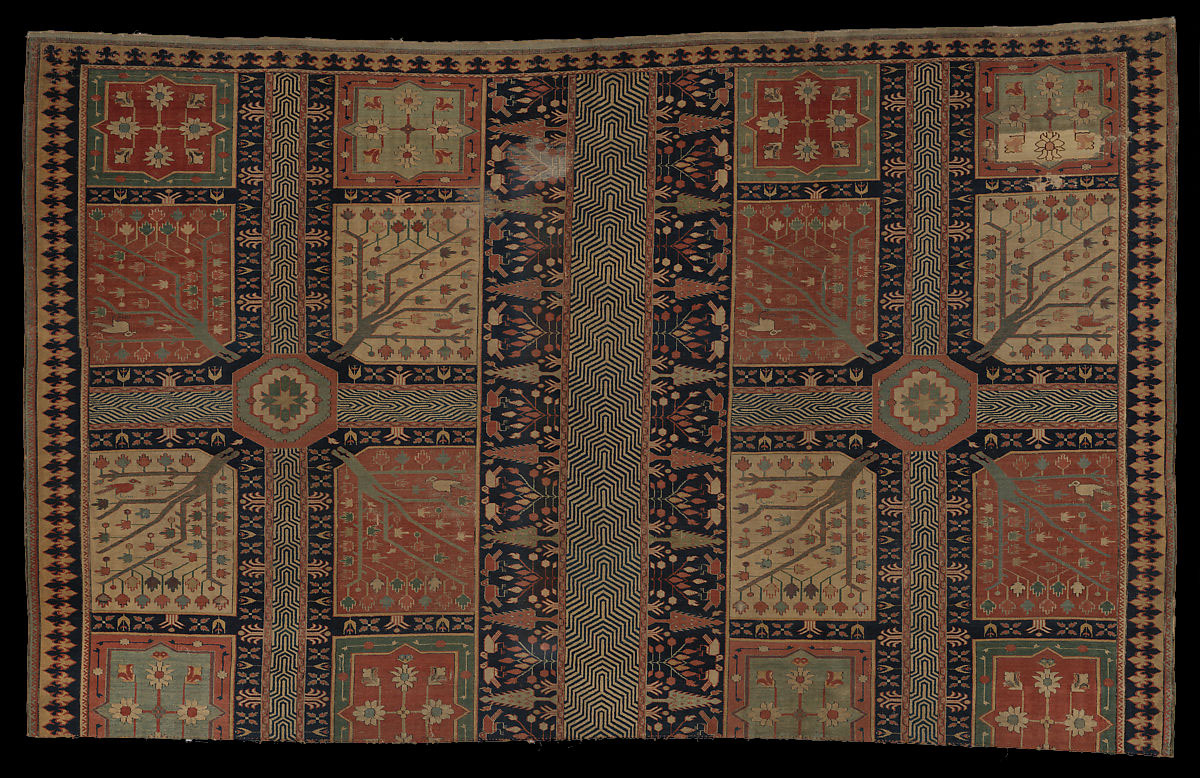Weaving Your Paradise: Specialist Gives Talk on History and Design of Persian Rugs
As part of the Jalinous Lecture Series, the Persian Studies Program hosted Safoura Zoroofchi, a Persian rug specialist for a virtual presentation “Weaving the Dream: The Legacy of Persian Rugs.” The talk, which was moderated by Sheva Tabatabainejad, spoke of the symbolism behind the design of these rugs and their significance in Persian culture, art and religion.
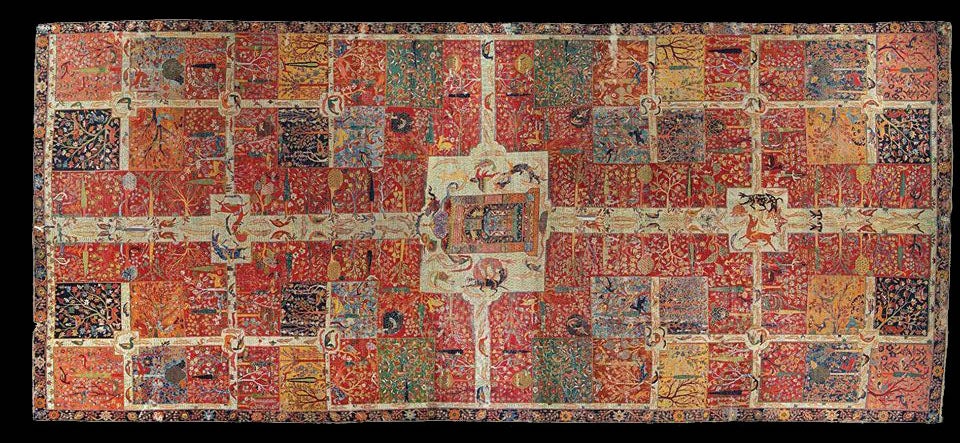
Safavid Chaharbagh rug, 17th century
Designing Your Paradise
Persian rugs were historically made by women who would learn to weave at a young age. The completed carpets, which could take years to complete, would become centerpieces of their new homes after they were married. Zoroofchi, whose earliest childhood memory is of sitting in her grandmother’s home surrounded by bright, lively rugs, says that these carpets were central to the lives of Persian women and their families.
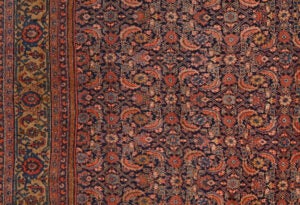
Antique Persian Carpet, Bijar
“They would start their new lives on this colorful rug – they would eat, play, sleep, give birth and live on this carpet,” she continues. “The beautiful elements and symbols could bring a flourishing garden or a heavenly image to their daily lives.”
Many Persian rugs depict ornate designs full of trees, birds and fish, which arose from the concept of heaven on earth in the form of gardens. Zoroofchi explained that the word paradise is derived from the Avastan word pari-daiza, which directly translates to “walled garden”.
Mythological figures like Gilgamesh, the Acadian King who searched for eternal life in a garden, as well as religious references such as the Garden of Eden contributed to the idea that gardens were a slice of heaven.

Fin Garden, Kashan
The philosophy of Persian garden design, known as Chaharbagh, and the Iranian arts can be seen in present-day Afghanistan, Pakistan and India. One of the most famous gardens, the Taj Mahal in Agra, India was built by Shah Jahan for his beloved wife, Mumtaz Mahal in order to give her “heaven on earth.”
Weavers of these rugs hoped to go on a “voyage to paradise” while never leaving their homes by incorporating elements of Chaharbagh gardens into their designs.
“During the Safavid era, Persian arts and carpet weaving reached their golden age as designers started looking at garden design rugs in a different way.” Says Zoroofchi. “They broke down the garden design into its elements of flowers, flower beds, water, cypress trees and seedlings in gardens and incorporated those elements in their designs.”
Zoroofchi focused on four of these elements, including the paisley design, which represented fertility and growth, the prayer rug design that typically incorporated an archway and flora, flower designs, and the intertwined fish design.
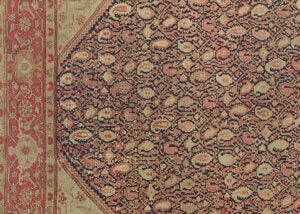
Antique Persian Rug, Senneh
Zoroofchi noted that these rugs bring freshness and hope to the home, but are also each unique, individual pieces of art that should be appreciated and treasured.
Changing your Paradise
Carpet weaving still exists in Iran today, though it has grown in popularity globally. Though many elements have largely stayed the same in their design, some changes have occurred.
“Today, there are more stylized designs with neutral colors than the bright, vivid colors of older Persian rugs,” says Zoroofchi. “I think that there are so many things happening around us that when we get to our homes, we want to spend time in a calmer place, so our idea of what paradise is may have shifted to accommodate this.”
Though the style of Persian carpets may have shifted over time, Zoroofchi says that she still believes that “when we buy a carpet, we want to bring a beautiful image to our home.
“If we look at carpets in that perspective, it’s still a vision of a better, more beautiful place that makes us happy and brings us peace,” she continues. “Rugs are a piece of art that we buy, but they are also something that we interact with. It is not a painting that we would hang on the wall, it is not a sculpture that we put on a table, it is something that we live on and live with.”
The full presentation is available here.
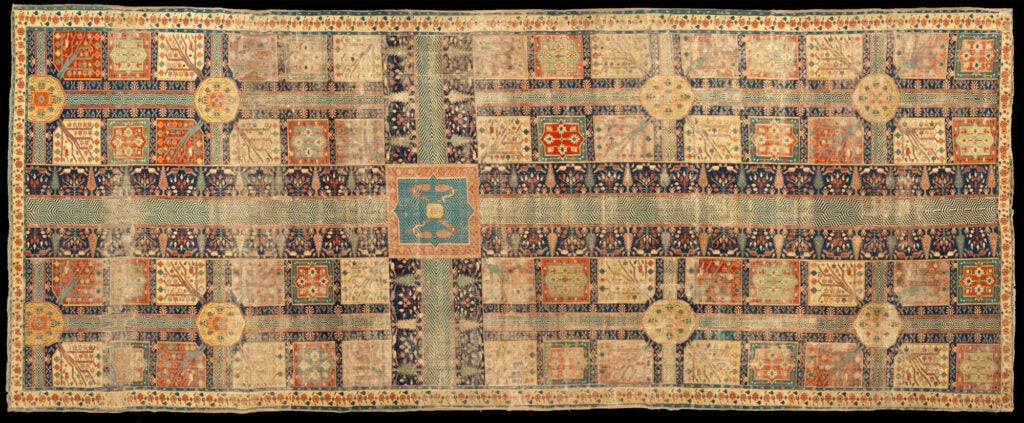
Garden Carpet, late 17th early 18th Century, Iran, Azerbaijan, Al-Sabah Collection, Kuwait National Museum
